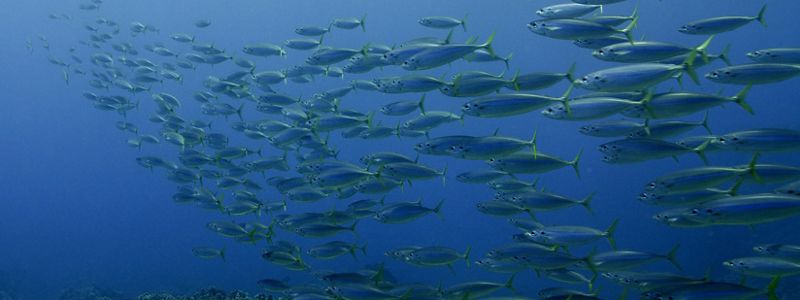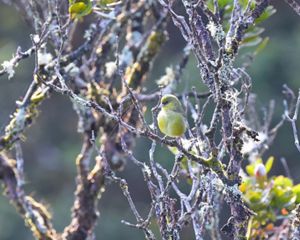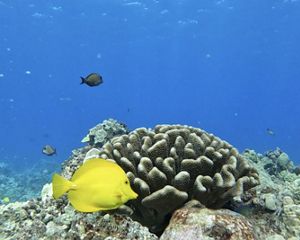
Scientists estimate that the 2020s are the defining decade for our climate future. In Hawai‘i, we work with nature because it is the most promising and cost-effective solution to address this challenge. We call this Natural Climate Solutions.
We apply nature-based solutions from mauka to makai, charting a course toward greater resilience and sustainability. We leverage cutting-edge technologies to unlock solutions to some of our greatest challenges, such as our efforts to save our native honeycreepers by crashing mosquito populations.
With efforts like the development of the world’s first coral reef digital twin, created by a multi-agency group through research conducted at TNC’s Palmyra Atoll Preserve, we are working to assist and empower coastal communities worldwide to safeguard their natural resources and the lives and livelihoods that depend upon them. This is just one example of how Palmyra Atoll allows us to study, understand, and predict climate change impacts, while developing solutions that can be applied globally.
In Hawaiʻi, it’s in our nature to protect what matters.
How We Tackle Climate Impacts
To bolster our ability to adapt to climate change, we will:
- Innovate Solutions: Explore and implement new techniques to build nature’s resilience in the face of climate change.
- Drive Scientific Discovery: Catalyze cutting-edge climate research and share advances from our work.
- Amplify Impact: Elevate successes that inspire hope, drive action and increase public and private investment in climate projects.
Innovating Solutions
At TNC, we’re exploring and implementing innovative techniques to strengthen the resilience of ecosystems. From restoring native forests and coral reefs to piloting adaptive land and marine management strategies, our work is grounded in science and guided by community.
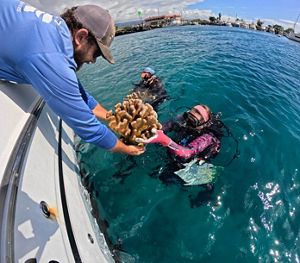
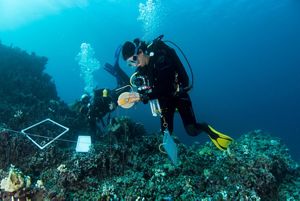
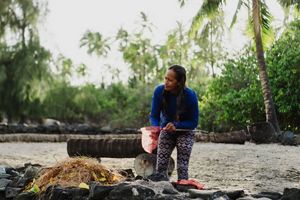
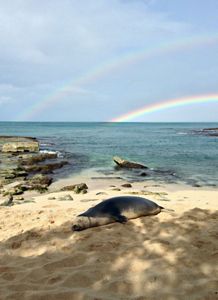

Coral Restoration: Members of the Hawai‘i Emergency Reef Restoration Network reattaching corals on Hawaiʻi island. © DLNR

West Hawaiʻi: Divers monitor coral reefs. © David Slater

Community Fishpond: Lehua Sandy Kamaka at the fishponds at Kiholo Bay. Kamaka is a Hoa ʻāina member with Hui Aloha Kiholo. © TNC

Monk Seal: A monk seal lounging on a beach with a double rainbow in the background. © Kenwei Chong
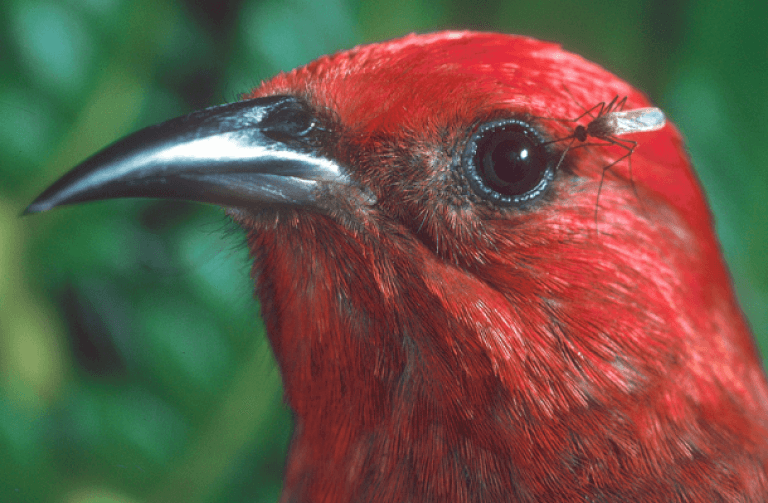
Safeguarding Hawaiʻi’s Vanishing Forest Birds
Warming temperatures brought on by climate change are allowing mosquitoes to move up in elevation into formerly safe havens, where they are spreading avian malaria to birds that are already on the brink of extinction. Just one bite can kill these birds.
Scientists agree that our best hope—one that can meet the scale and the pace of the threat—is reducing mosquito populations as quickly as possible. TNC is working with partners to deploy an innovative technology called Incompatible Insect Technique (IIT), where non-biting male mosquitoes are bred in a lab with a naturally occurring bacteria that renders them sterile so that when they are released in our preserves and mate with females, the eggs will not hatch, causing the populations to crash.
We are in the first year of implementing this method on Maui and in trials on Kauaʻi.
Driving Scientific Discovery
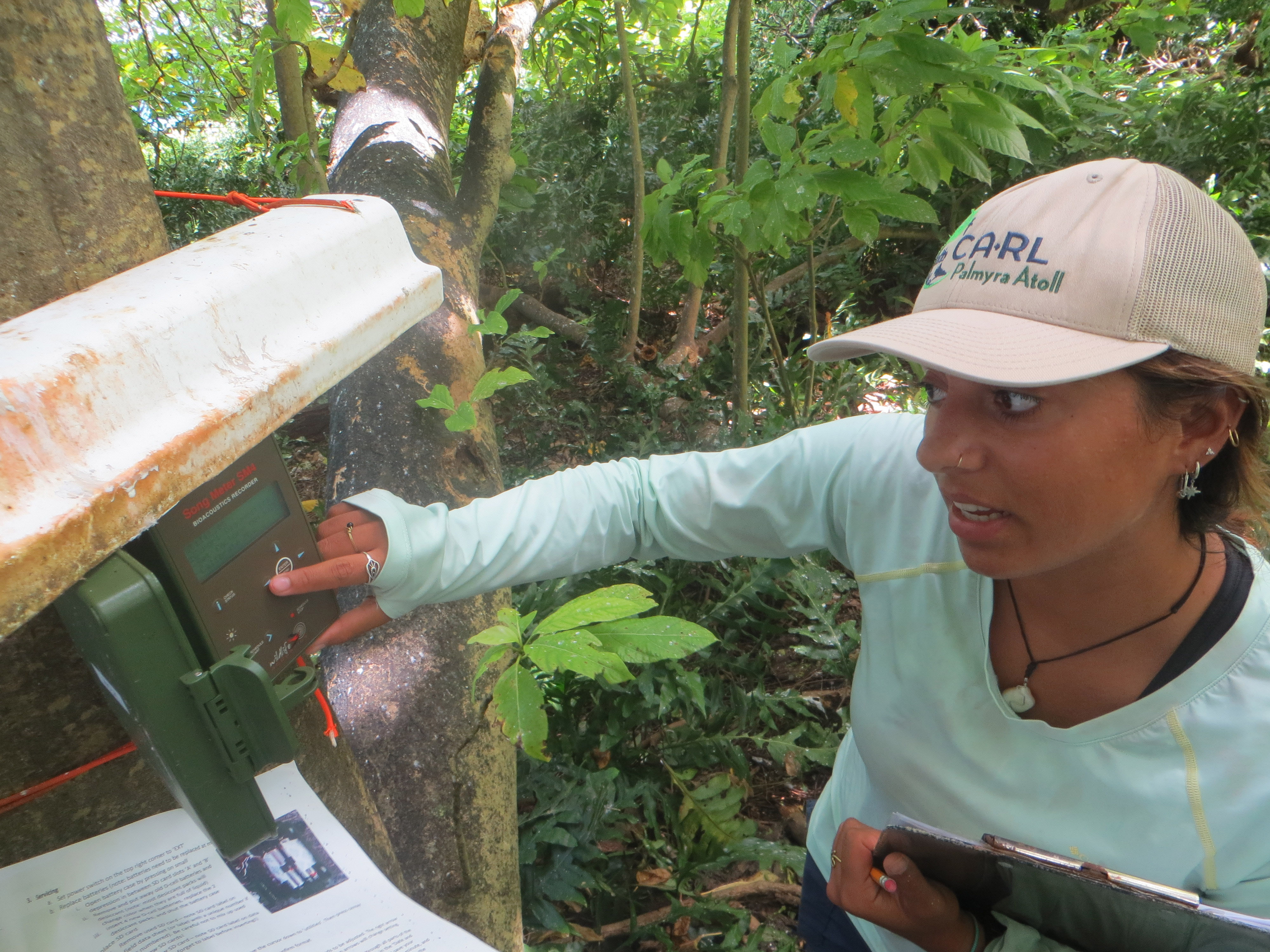
In the face of a rapidly changing climate, TNC is advancing bold, science-driven solutions. Through cutting-edge research, we’re making discoveries that inform global climate resilience while protecting some of the planet’s most unique ecosystems. By sharing our findings and collaborating with partners, we’re turning knowledge into action.
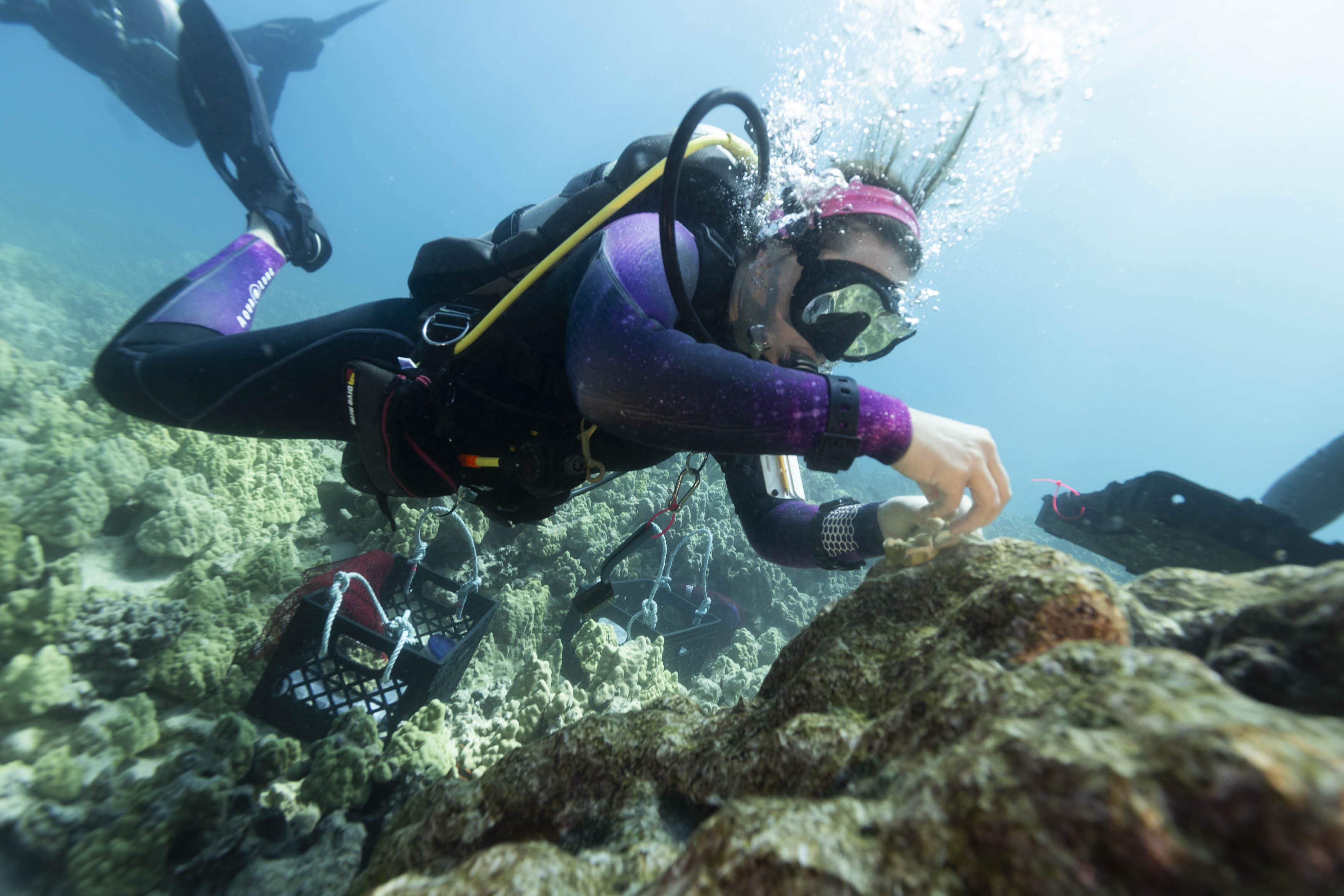
The World’s First Digital Reef
What makes reefs healthy in a changing climate? TNC worked with partners to develop a tool to help answer that question: the "digital twin” is a four-dimensional virtual replica of a reef that allows scientists to virtually test potential restoration actions.
The team developed the first digital twin using Palmyra’s coral reefs. Palmyra was selected as the ideal location to start this work due to the abundance of existing scientific data and the variety of reef conditions from near-pristine areas to sites extremely degraded from WWII.
The tool allows users to try things out within the model, such as planting corals to see where currents spread their larvae, and then selecting the best locations based on optimal dispersal. This knowledge can then inform the methods that will yield the best results for restoring reefs.
This kind of knowledge and technology developed by TNC and our partners will assist and empower coastal communities worldwide to safeguard their reefs and the lives and livelihoods that depend upon them.
Quote: Dr. Eric Conklin
It’s so easy to find stories of doom and gloom with a changing climate, [but] we see Palmyra as a story of hope. It inspires us every day about the true power of nature.
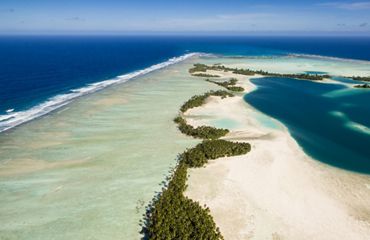
Amplifying Impact with Natural Climate Solutions
We are seeing more frequent and severe storms, fires and flooding around the world. And with them, astounding loss—of lives, homes, neighborhoods and wildlife habitat. Sediments and nutrients flow into fresh water supplies and oceans—all at ever-increasing costs to our health, security and economy. When it comes to climate change, time is not on our side.
Working with nature is the most promising and cost-effective solution. Natural climate solutions can reduce a third of climate impacts and include conservation, restoration and management actions that increase carbon storage in landscapes, wetlands and seascapes to offset greenhouse gas emissions. Nature-based solutions also build resilience in the systems that protect us from the impacts of climate change, such as coral reefs and wetlands that protect our coastal infrastructure and communities from storm surge and flooding.
Palmyra Research Station
We are leveraging Palmyra Atoll's unique position as the world’s most accessible highly protected area with very few human impacts to foster invaluable partnerships and develop conservation insights for the globe. Click on the photos to learn more.

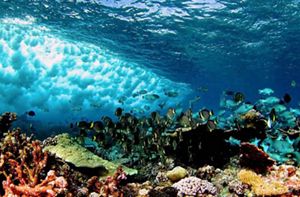
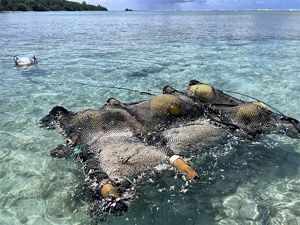



Palmyra Forests: This picture shows an example of the project's goal: a healthy native rainforest. © Andrew Wright

Underwater waves Palmyra reef : Underwater waves on reef at Palmyra © TNC/Kydd Pollock

dFAd on Palmyra Atoll: A drifting Fish Aggregation Device (dFAD) as seen on Palmyra Atoll. © Hannah Martin/TNC

Palmyra Divers: A marine monitoring and research team studies coral reefs and reef life at Palmyra Atoll. © Tim Calver

Palmyra Atoll: Seabirds with decoys designed to attract them back to the atoll. © TNC
Fighting Fire for Native Forests
Fires in Hawaiʻi are growing in frequency and intensity, driven by warming temperatures, decreasing forests, invasive grasses, worsening drought and human behavior—over 99% of fires in Hawai‘i are human caused. Wildfires in Hawaiʻi devastate communities, the economy, water quality, forests and coral reefs. Because fire is not a natural part of our native ecosystems, once a Hawaiian forest burns, its complexity is gone forever.
TNC preserves are home to some of Hawaiʻi’s last remaining native forests, which are the only home for our endangered native honeycreepers and other birds. We have a kuleana (responsibility) to safeguard them against this threat. TNC is bolstering our long-standing fire prevention work by creating firebreaks, clearing flammable grasses from access roads, and maintaining emergency response infrastructure such as helicopter landing zones, fire cameras and water tanks in remote areas. Fire cameras on Maui and Hawaiʻi island provide an early warning detection system.
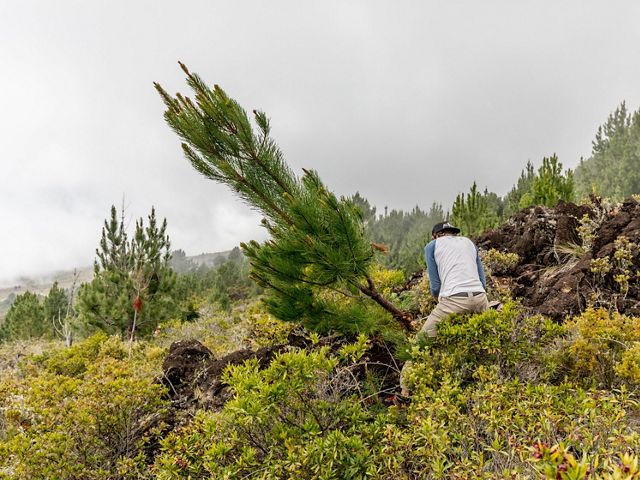
Where our forest preserves are surrounded by former pastureland, we work with local ranchers to reduce invasive, fire-prone grasses. On Maui, we’ve recently expanded our efforts to reduce fire risk by removing invasive, highly flammable pines that are spreading into our Waikamoi Preserve and across the summit area of Haleakalā.
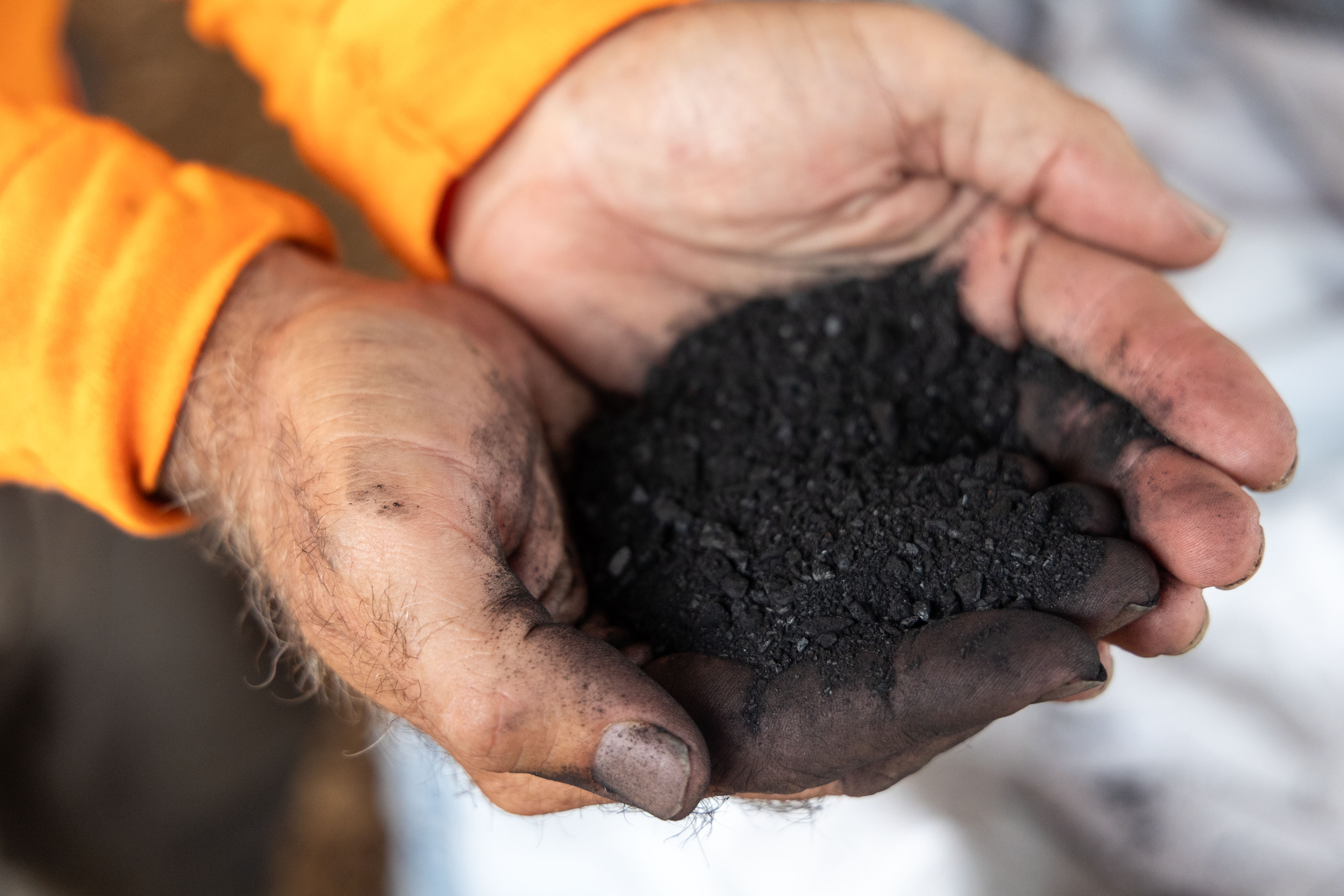
From Fire Fuel to Carbon Capture
In 2007 a wildfire swept through nearly 2,300 acres of the Kula Forest Reserve on Maui, fueled by non-native pines planted in the early 1900s. The fire’s strong updrafts carried pine seeds across the summit of Haleakalā. Soon after, conservationists began finding invasive pine seedlings sprouting in sensitive subalpine and alpine areas—habitats that native plants and endangered seabirds depend on.
Since then, TNC and partners have been working to control these invasive pines, which alter soil chemistry, create fire-prone landscapes and threaten the health of East Maui’s watershed. Now, TNC and our partners are taking an innovative approach that turns this invasive tree into a tool for healing.
After the devastating fires in 2023, TNC launched the Waikamoi Biochar Project, a bold effort to reduce wildfire risk by removing highly flammable invasive pine trees and converting them into biochar. TNC crews and volunteers are cutting smaller pines along the preserve’s roadways, curing the wood and processing it in a kiln operated by Haleakalā Biochar. The result is a powerful type of charcoal called biochar that acts as a soil amendment with multiple benefits. Biochar can retain water and nutrients, provide habitat for beneficial soil microbes, filter water and add nutrients to farmland. One ton of biochar can sequester three tons of carbon. TNC is donating this biochar to Maui communities to help them restore fire-scarred lands.
Collaboration is at the heart of this effort. TNC has joined forces with watershed partners, Haleakalā Ranch, and community volunteers to reduce fuels and replant native trees in Waikamoi Preserve. Together, TNC and our partners are building a landscape-wide strategy that protects our native forests and restores habitat for endangered birds while helping Maui communities heal from wildfire damage. By transforming invasive pine trees into a resource for renewal, this work strengthens the connections between people, place and nature.
We Can’t Save Nature Without You
Sign up to receive monthly conservation news and updates from Hawai’i & Palmyra. Get a preview of Hawai’i & Palmyra’s Nature News email.
